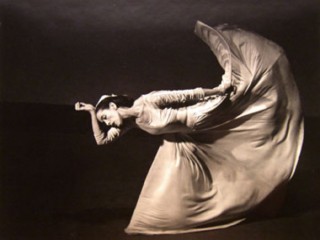
Martha Graham biography
Date of birth : 1894-05-11
Date of death : 1991-04-01
Birthplace : Allengheny City, Pennsylvania, U.S.
Nationality : American
Category : Arts and Entertainment
Last modified : 2010-07-28
Credited as : Artist dancer and choregrapher, The Martha Graham Dance Company, award of the USA: the Medal of Freedom
2 votes so far
"Sidelights"
Martha Graham was the leading American figure in modern dance in the twentieth century, with a productive seventy-year career that included dancing, choreography, and the establishment of the world-renowned Martha Graham School for Contemporary Dance. Graham was known for bringing psychological depth and emotion to her medium through a variety of experimental techniques in bodily expression as well as in theatrical arrangement. Although critics were somewhat slow to appreciate her innovative work during her early years, for decades Graham has been credited with pioneering the transition in dance from nineteenth-century romanticism to the modern era--a revolution begun by the famed American dancer Isadora Duncan. The Aspen Institute, upon granting Graham the Aspen Award in the Humanities in 1965, proclaimed that her work "reaffirmed the primacy of the human spirit in an age dominated by science and technology" and that in it Graham "found new ways to express our deepest thoughts and feelings." Graham was the first recipient of the U.S. Medal of Freedom, presented in 1976 by President Gerald Ford who called her "a natural treasure." She choreographed over 170 works, including Letter to the World, a dance based on Emily Dickinson's life and poetry, Appalachian Spring, Clytemnestra, and Frontier. The dancer and author also collaborated on set designs, designed costumes, and gave lectures on dance throughout the world. Performing as a dancer until she was seventy-five, Graham continued for two decades thereafter to choreograph, direct, and lead her dance company. Her writings include The Notebooks of Martha Graham and her 1991 autobiography, Blood Memory, written with the assistance of Jacqueline Onassis.
Graham choreographed until her death from pneumonia in 1991 at the age of 96. She was cremated, and her ashes were spread over the Sangre de Cristo Mountains in northern New Mexico.
The Martha Graham Dance Company is the oldest dance company in America and continues to perform, including at the Saratoga Performing Arts Center in June 2008, a program consisting of: Ruth St. Denis' The Incense; Graham's reconstruction of Ted Shawn's Serenata Morisca; Graham's Lamentation; Yuriko's reconstruction of Graham's Panorama, performed by dancers from Skidmore College; excerpts from Yuriko's and Graham's reconstruction of the latter's Chronicle from the Julien Bryan film; Graham's Errand into the Maze and Maple Leaf Rag.
PERSONAL INFORMATION
Family: Born May 11, 1894, in Pittsburgh, PA; died of cardiopulmonary arrest, April 1, 1991, in New York, NY. Education: Attended Bard College. Memberships: Cosmopolitan Club.
AWARDS
Guggenheim fellow, 1932 and 1939; Capezio Award, 1959; Aspen Award, 1965; creative arts award from Brandeis University, 1968; award for distinguished service to arts from National Institute of Arts and Letters, 1970; Handel Medallion of New York, 1970; U.S. Medal of Freedom, 1976; chevalier of French Legion of Honor, 1984; LL.D. from Mills College, Brandeis University, Smith College, and Harvard University.
CAREER
Soloist with Denishawn Company, Los Angeles, CA, and Greenwich Village Follies, New York, NY, beginning in early 1920s; member of faculty at Eastman School of Music, University of Rochester, beginning in 1925, and Juilliard School; founder of Dance Repertory Theatre, New York City, 1930; artistic director of Martha Graham School of Contemporary Dance and Martha Graham Dance Company. Choreographer of more than 170 solo and group productions, including the films "A Dancer's World," "Appalachian Spring," and "Night Journey;" conducted foreign tours under auspices of U.S. Department of State and National Endowment for the Arts.
WRITINGS BY THE AUTHOR:
* (Contributor) Virginia Stewart, editor, Modern Dance, E. Weyne, 1935, revised edition, 1984.
* (With Louis Horst) El penitente, Orchesis Publications (New York, NY), 1960.
* The Notebooks of Martha Graham, Harcourt, 1973.
* (Author of introduction) Louis Horst, Modern Dance Forms: The ABCs of Modern Dance As Defined by Its Originators, Princeton Book (Princeton, NJ), 1987.
* Blood Memory, Doubleday (New York, NY), 1991.
















